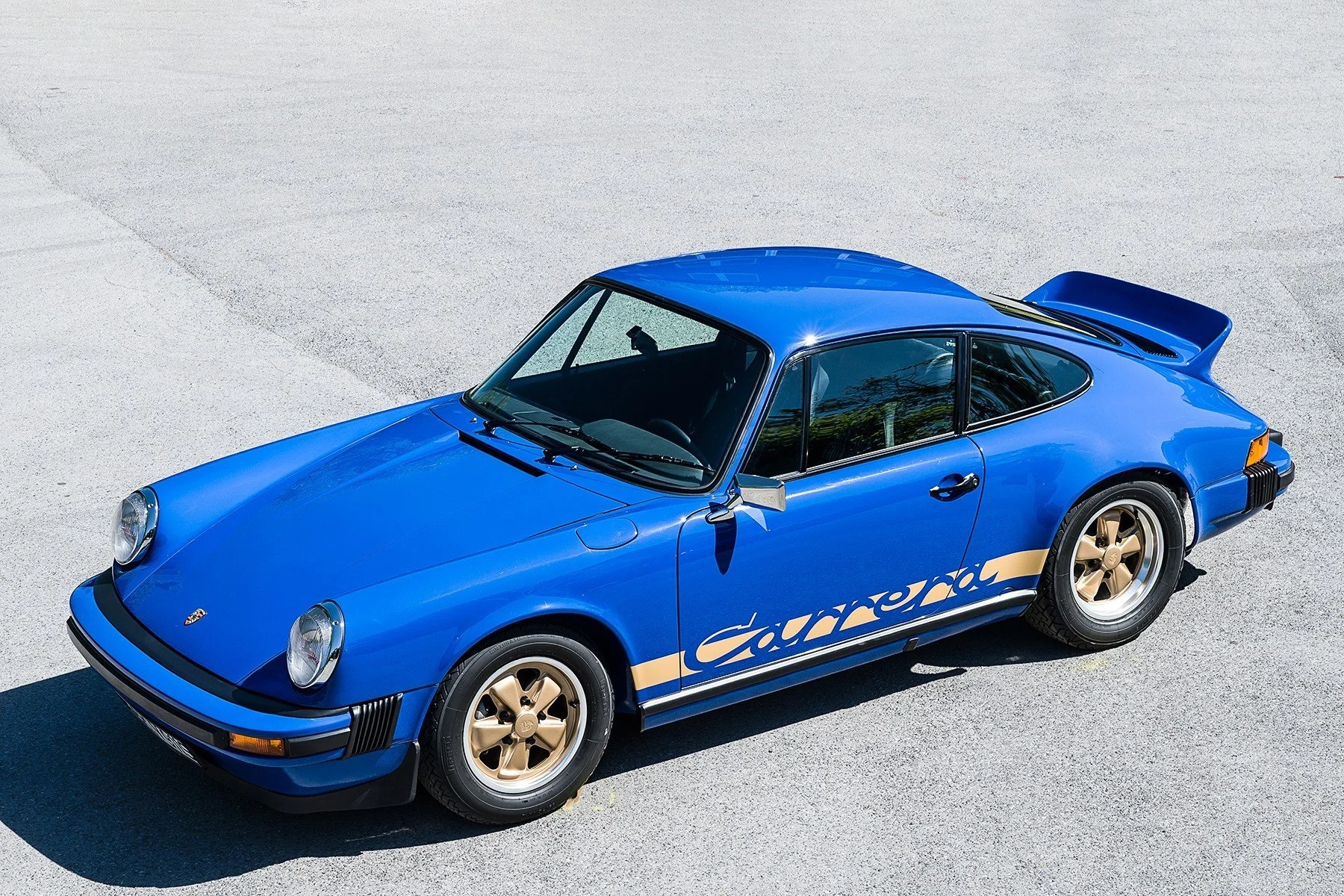VIN: the Theo Helfrich / Ludwig Fischer Porsche 550 chassis 0036
/HISTORY OF CHASSIS 0036
Chassis 0036 was the 550 purchased new by Frankfurt racing driver, Theo Helfrich.
Between 1949 and 1953, Helfrich mostly campaigned Veritas cars in a mixture of sports and monoposto events. The ‘52 season also saw him drive a W194 300 SL for the factory Mercedes-Benz team at Le Mans (where he placed second) and the Nurburgring GP (where he placed fourth). In 1953, Helfrich was crowned German Formula 2 champion.
0036 was purchased for Helfrich to race in 1955. It was completed in April of that year and shaken down prior to delivery on May 4th.
Painted white with blue fender flashes, the Porsche made its debut in the German Sportscar Championship race at Hockenheim on May 8th. Unfortunately, having qualified fourth, Helfrich failed to finish after an off-track excursion.
Other appearances in 1955 included the Nubrurgring 500km race on August 28th (retired just before mid-distance) and at the Berlin GP which took place on the high speed Avus track. Up against a field of 1.5-litre Sports cars, Helfrich finished seventh overall.
For 1956, Helfrich often shared 0036 with Peter Nocker. Highlights of their campaign included fifth overall and second in class at the Montlhery Prix de Paris (Nocker), fifth overall and fourth in class at the Rouen GP (Helfrich), eleventh overall and third in class at the Swedish GP (Nocker and Wolfgang Seidel) and third overall in the Berlin GP at Avus (Helfrich).
Mid-way through the 1956 season, Theo Helfrich had 0036 repainted silver and it was in this colour scheme that the car was sold to Ludwig Fischer for 1957. 0036 joined a Porsche 356 A Carrera which Fischer also raced that year. Like Theo Helfrich, Fischer was another seasoned campaigner in single seat racing cars.
During the course of 1957 and 1958, Fischer used chassis 0036 for a mix of European Mountain Championship events and circuit races. He competed in Germany, Italy, Austria and Yugoslavia and picked up several good results along the way.
Among the most impressive were twelfth overall at the 1957 Gaisberg Hilcllimb, fifth overall in the 1958 Napoli GP, fourth overall at the 1958 Opatija GP, second overall at the 1958 Baden Rock 300km race and eighth overall at the 1958 Innsbruck Flugplatzrennen.
Over the winter of 1958-1959, chassis 0036 was sold to an American serviceman stationed in Germany who took the car home with him in 1960. Between 1964 and 1972, chassis 0036 went through the hands of three more US owners, after which it was purchased by a long-term custodian who retained it until 2022.
The restored car was subsequently sold by Bonhams at their Amelia Island auction in March 2022 for $4.185m.
Notable History
White with Blue flashes
Sold to Theo Helfrich, Frankfurt
Registered BR 226-289
08/05/1955 GSC Hockenheim (T. Helfrich) DNF (#4) - q4, accident
28/08/1955 GSC Nurburgring 500km (T. Helfrich) DNF (#11) - dnf just before mid distance
25/09/1955 GSC Berlin GP, Avus (T. Helfrich) 7th oa, 7th S1.5 class (#17) q10
22/04/1956 IND Solitude Rally (???) ran (#??)
29/04/1956 IND Montlhery Prix de Paris 2.0 Race (P. Nocker) 5th oa, 2nd Ser 2.0 class (#2)
06/05/1956 DDR Leipzig (T. Helfrich) ran (#28)
27/05/1956 GSC Nurburgring 1000km (T. Helfrich / P. Nocker) DNF (#40)
08/07/1956 IND Rouen GP (T. Helfrich) 5th oa, 4th S1.5 class (#14)
22/07/1956 GSC Solitude (P. Nocker) 13th oa, 6th in class (#31)
05/08/1956 GSC Nurburgring Rheinland Pokal (P. Nocker) 20th oa, 6th Ser S1.5 class (#71)
12/08/1956 WSC Swedish GP (P. Nocker / W. Seidel) 11th oa, 3rd Ser 2.0 class (#45)
16/09/1956 GSC Berlin GP, Avus (T. Helfrich) 3rd oa, 3rd S1.5 class (#24)
23/09/1956 DDR Dessau Autobahn Race (T. Helfrich) 4th in class (#23)
Sold to Ludwig Fischer, Bad Reichenhall
30/06/1957 EMC Mont Ventoux Hillclimb (L. Fischer) 23rd oa, 16th S class (#17)
28/07/1957 EMC Freiburg-Schauinsland Hillclimb (L. Fischer) ran (#48)
15/08/1957 EMC Gaisberg Hillclimb (L. Fischer) 12th oa, 12th S class (#23)
18/08/1957 IND Roskilde GP (L. Fischer) ran (#23)
27/04/1958 IND Napoli GP (L. Fischer) 5th oa, 5th S1.5 class (#??)
14/05/1958 EMC Mont Parnes Hillclimb (L. Fischer) 9th oa, 6th S class (#11)
15/06/1958 IND Opatija GP, Abbazzia (L. Fischer) 4th oa (#??)
06/07/1958 IND Baden Rock (L. Fischer) 2nd oa (#??)
13/07/1958 EMC Trento Bondone Hillclimb (L. Sischer) 59th oa, 18th S class (#??)
20/07/1958 EMC Freiburg Schauinsland Hillclimb (L. Fischer) 16th oa, 6th S class (#??)
03/08/1958 IND Rheinland Pfalz Preis, Nurburgring (L. Fischer) 11th oa (44)
15/08/1958 EMC Gaisberg Hillclimb (L. Fischer) 14th oa, 10th S class (#100)
17/08/1958 IND Zeltweg Flugplatzrennen (L. Fischer) 8th oa, 4th S1.5 class (#100)
05/10/1958 IND Innsbruck Flugplatzrennen (L. Fischer) ran (#85)
Winter 1958-1959 and exported to the USA in 1960
Text copyright: Supercar Nostalgia
Photo copyright: Technisches Museum Wien - https://www.technischesmuseum.at/en
















































































